A Turkish breakfast is perfect for size queens
Clearly, the Turks don't believe in the principle of "less is more."
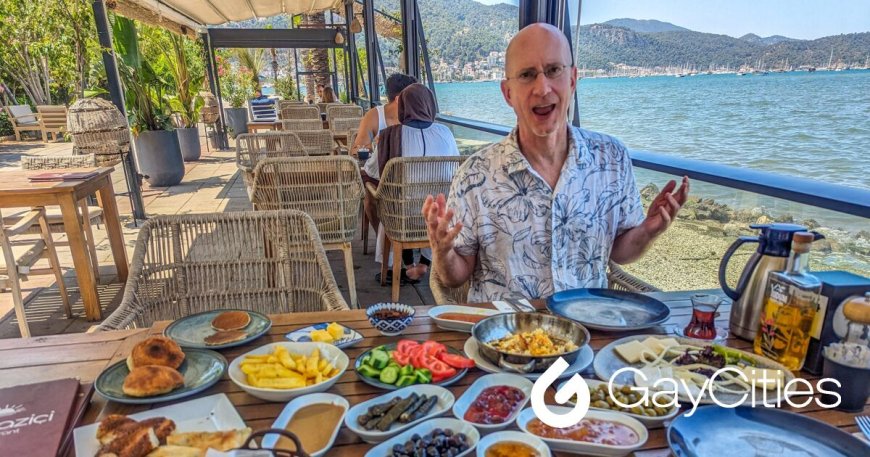
Brent Hartinger and Michael Jensen are a gay “digital nomad” couple — two men who travel the world continuously, living in different countries for anywhere from one to three months at a time. Subscribe to their newsletter at BrentAndMichaelAreGoingPlaces.com.
One morning last May, Brent and I sat at an outdoor seaside table at a restaurant in Fethiye in Southern Turkey. The blue water of the Gulf of Fethiye sparkled in the sun, and a refreshing breeze blew in off the sea.
Then, our waiter appeared pushing a double-decker trolley. He started taking dishes from the trolley and putting them onto the table: small white bowls of glistening olives, jams, honey, and butter, plates of crunchy cucumbers, bright red tomatoes, and a selection of different cheeses.
The food kept coming: a plate of scrambled eggs, one of fried potatoes, and another of French fries.
Pack your bags, we’re going on an adventure
Subscribe to our weekly newsletter for the best LGBTQ+ travel guides, stories, and more.
Subscribe to our Newsletter today
And still the food kept coming! A plate of pancakes. A tray of what looked like dolmas. Another plate with two more kinds of Turkish bread — and another with fried pastries, and another with a kind of fried rolled pastry.
This was a breakfast for two people? Clearly, the Turks didn’t believe in the principle of “less is more.”
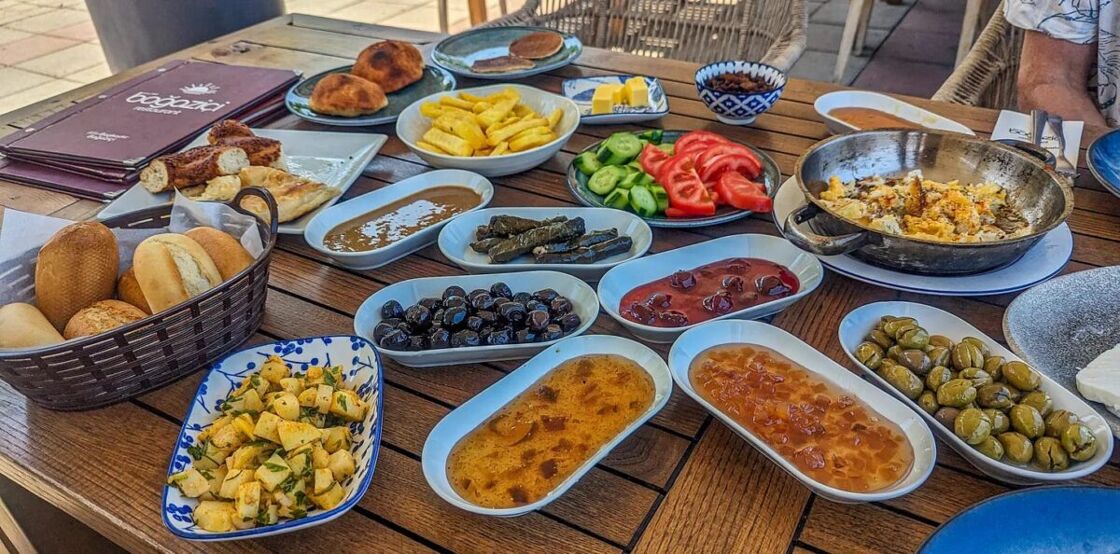
When I first arrived in Turkey, I assumed these lavish breakfasts were a gimmick for tourists.
And they are a big part of the tourist trade. You’ll see signs reading “Traditional Turkish Breakfast Served Here!” everywhere in tourist areas.
But the Turkish breakfast — called kahvaltı in Turkish — is more than a gimmick. It has a long history and still plays an important role in Turkish society.
All that said, the real question is: is it any good?
What exactly is in a Turkish breakfast?
There isn’t one specific list of dishes to be served in a Turkish breakfast, but these items are almost always included:
- Lots of bread, including simits — a circular bread a bit like a soft pretzel, usually covered with sesame seeds — and pide, a kind of flatbread
- Cheeses, including a white cheese known as beyaz peynir, a semi-hard yellow cheese called kaşar, and a tangy goat cheese known as tulum
- Sliced tomatoes and cucumbers
- Black and green olives, usually marinated with herbs and spices
- Eggs served fried and/or hard-boiled, along with a Turkish dish called menem, which is eggs scrambled with garlic, tomatoes, and peppers
- Spicy sausage, called sucuk, or pastırma, which is cured beef
- Spreads, including honey, butter, preserves, and olive oil
- Turkish tea, or çay, always served in small, tulip-shaped glasses
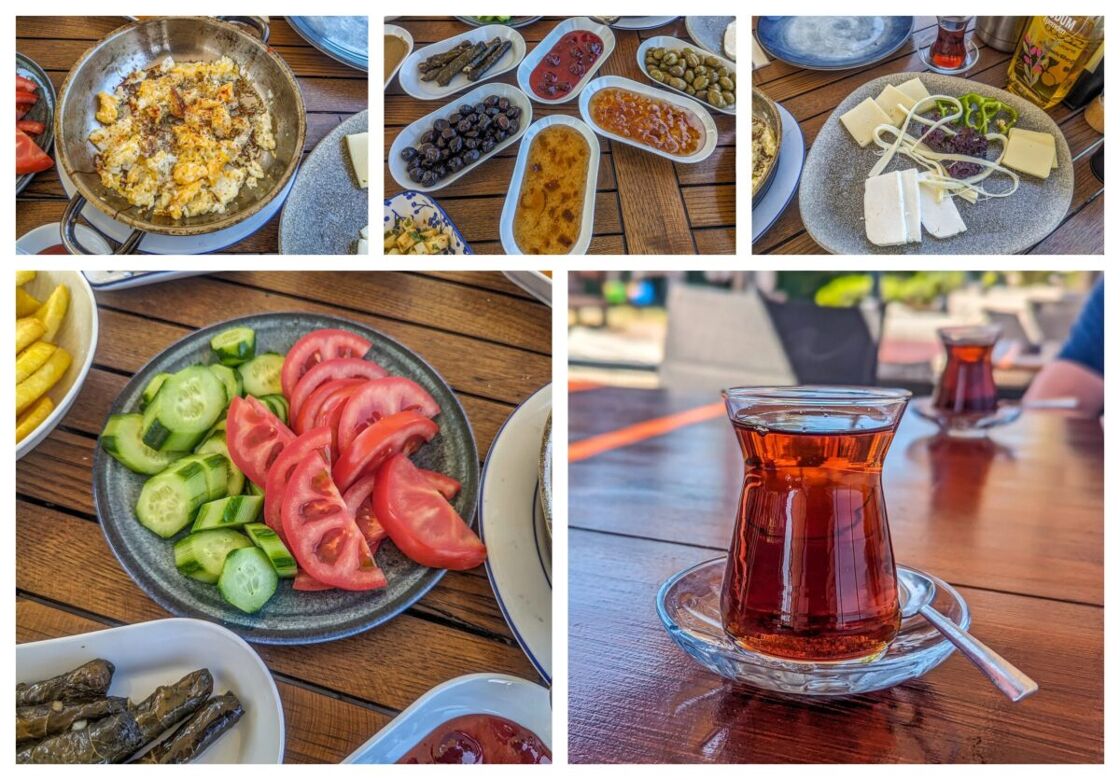
Optional but very popular items include:
- Potatoes — usually French fries and/or diced and pan-fried
- Clotted cream known as kaymak
- Stuffed grape leaves, or sarma
- Börek, a savory pastry stuffed with vegetables, meat, or cheese
- Gözleme, a crepe-like pastry stuffed with vegetables, meat, or cheese
- Pancakes
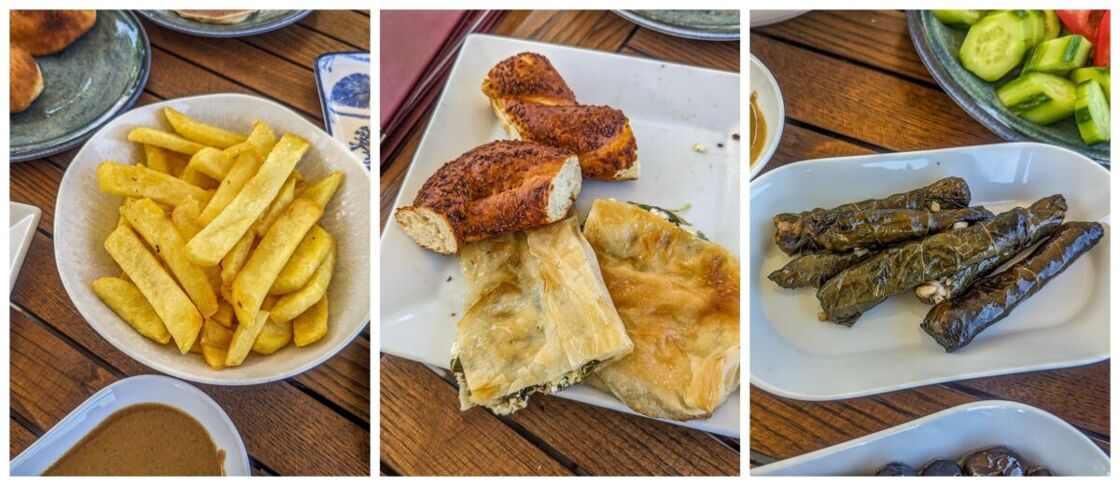
When did Turkish breakfasts start?
No one knows precisely when or why these breakfasts grew so spectacular. In the Middle Ages, breakfast in Turkey was the simple local fare found in most of Europe: soup, bread, and cheese.
But then Turkey gave rise to the Ottoman Empire, and the area grew in wealth and influence. As the empire conquered other cultures, they incorporated food from those areas into their meals — new kinds of cheeses and types of olives. They also developed increasingly complicated pastries initially created in the royal kitchens for the sultan but slowly adopted by everyday Turks. Tomatoes were a late addition to Turkish cuisine, arriving in the 19th century.
Their breakfasts grew ever larger. At some point, the lavish morning feast began to look like the breakfasts we eat today.
But, of course, modern Turks don’t eat this way every day. These vast spreads are reserved for weekends and special occasions. And they’re leisurely, social affairs — as much about spending time with friends and families as about food.
When did the Turkish breakfast become a tourist draw?
Modern tourism in Turkey began in the 1950s, and as wealthy Europeans and Americans began visiting, word of the country’s lavish breakfasts began to spread to the rest of the world. Before long, local businesses started advertising Turkish breakfasts to tourists.
But in the 2000s, these breakfasts’ popularity truly soared. First came TV programs like Anthony Bourdain’s No Reservations, and channels and networks like the Food Network and CNN International.
Then came the bloggers, social media influencers, and now even travel newsletters like Brent and me.
These days, everyone who visits Turkey wants to try a Turkish breakfast.
But is it any good?
I doubted that the Turkish breakfast could live up to its hype.
And the first one we tried left us a bit underwhelmed. The spread had been smaller than we’d expected, and the food was not particularly flavorful.
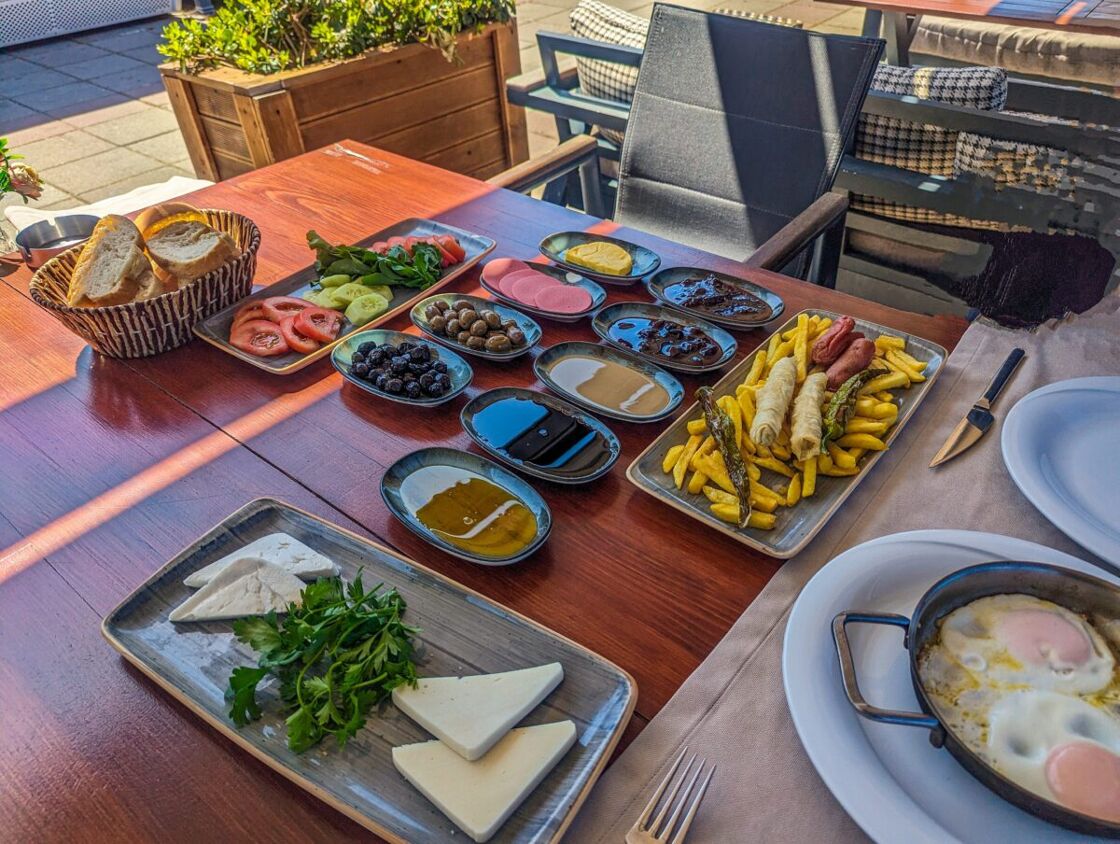
A week or so later, we tried again — at a place called Boğaziçi. If nothing else, the restaurant’s view was terrific, with each table overlooking the sea.
Part of the fun of a Turkish breakfast is simply the spectacle of it all. The waiter definitely made a show of it, dramatically laying out all of the food, dish by dish.
It looked so beautiful, we almost didn’t want to disturb it.
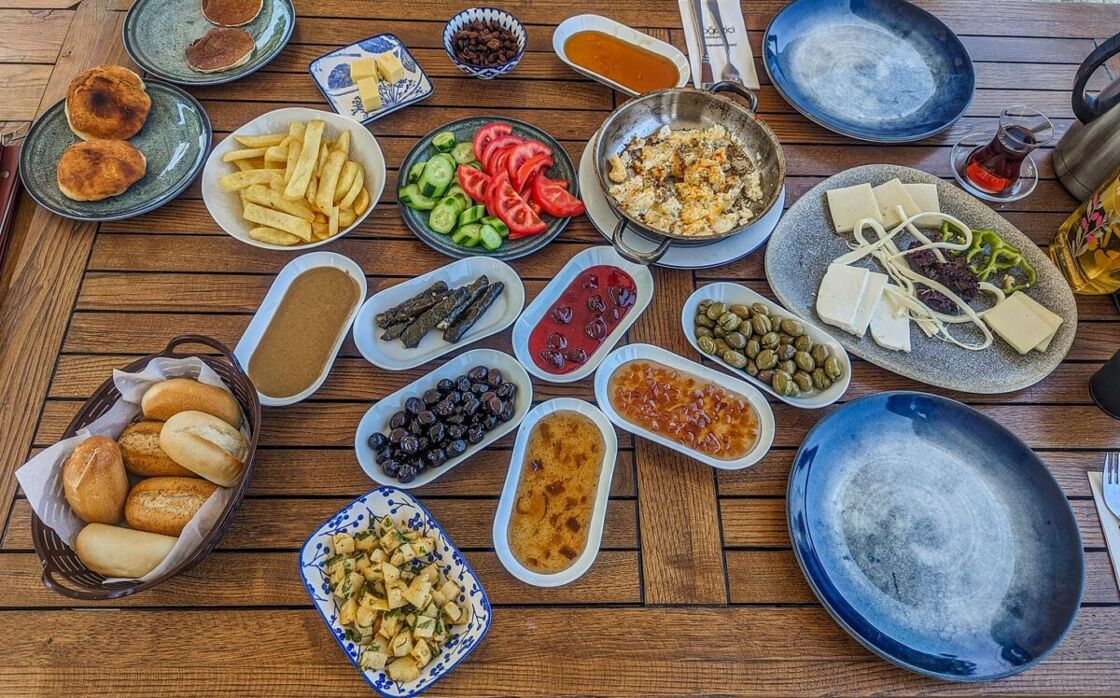
But of course, we did — and it tasted as good as it looked.
The garlicky eggs had a nice zing, the goat cheese was tangy, and the börek was crisp and savory. The tomatoes and cucumbers were garden fresh, and the olives stewed in that fantastic melange of herbs and spices.
The French fries were definitely good, but I confess: fries are so common in America that they made the meal seem a bit less “special.”
And the total cost? About $12 USD per person — relatively expensive by Turkish standards and on the high end of Turkish breakfasts in town. But still a bargain to us.
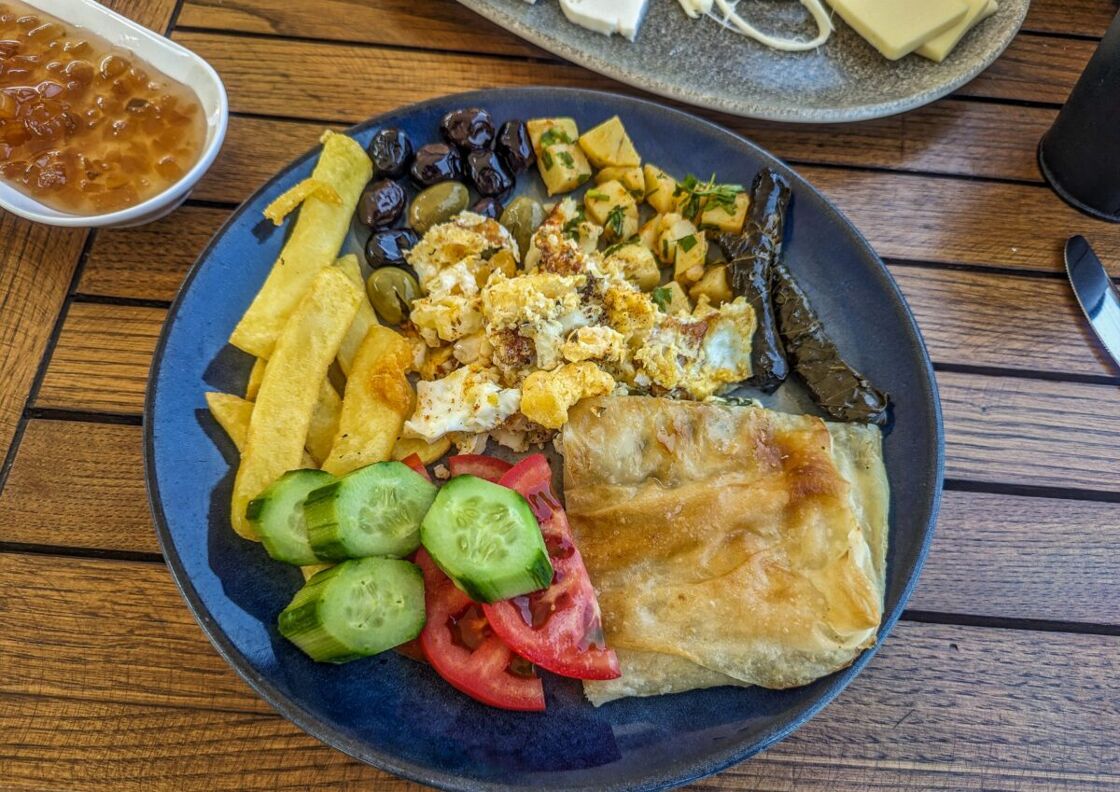
It was, of course, far too much food. We couldn’t finish it all and didn’t eat the rest of the day. But the platters and bowls are fairly small and often shallow. There isn’t quite as much food as you might think.
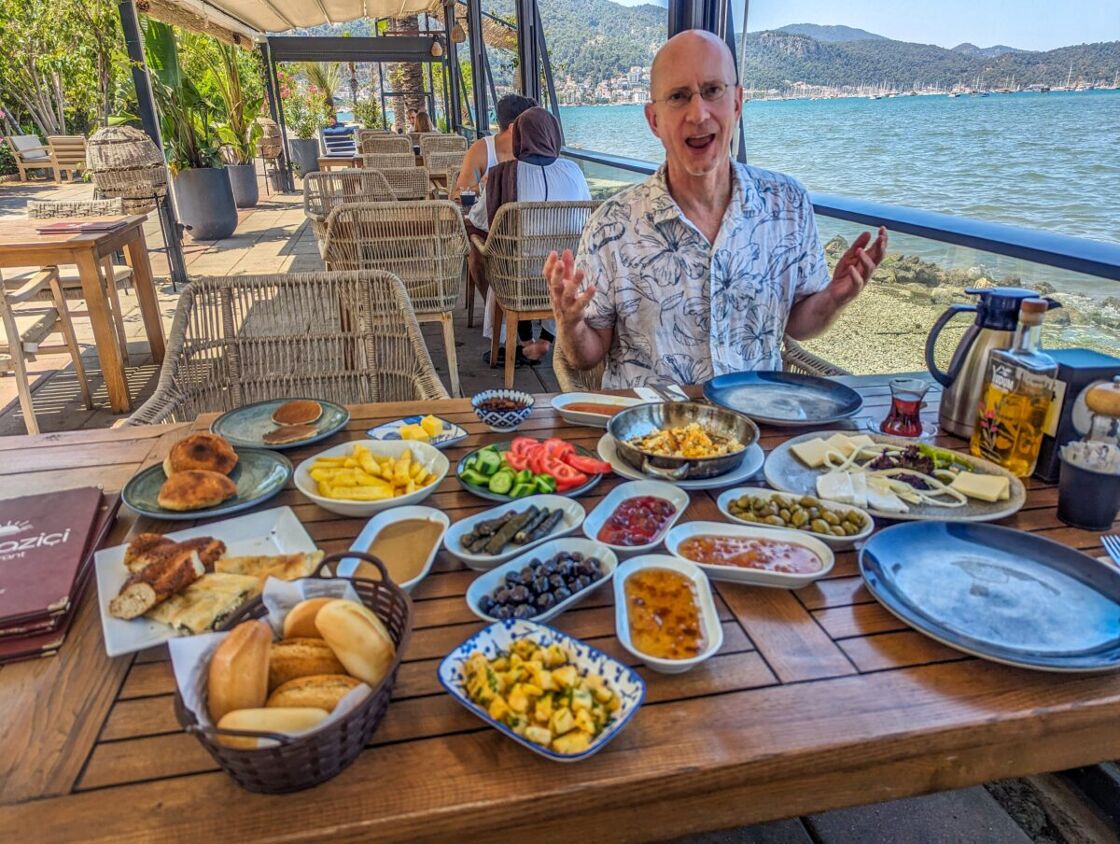
The truth is, sometimes less is more. In creating such a lavish spread, individual items suffered. The stuffed grape leaves were bland, and the pancakes mediocre — and redundant, given all the other breads.
Even so, we have no real complaints. In the end, our second Turkish breakfast lived up to the hype.
And as with the Turks, it was about more than just the food. Brent and I had a lovely, lazy morning, sitting along that water, talking and enjoying the view.
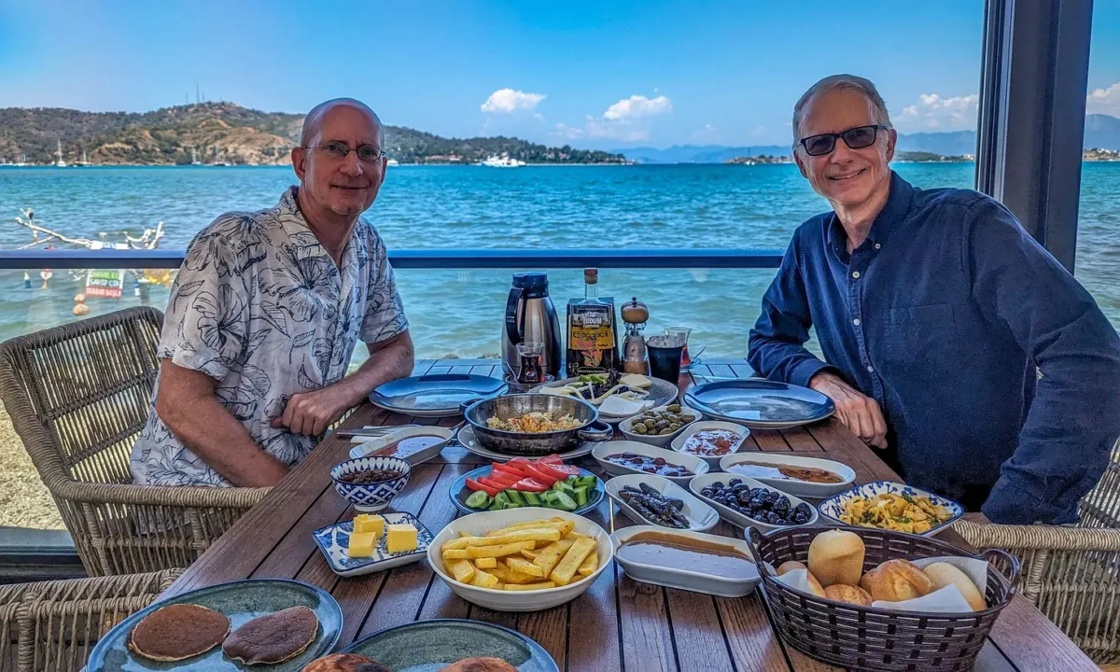

 Mark
Mark 





